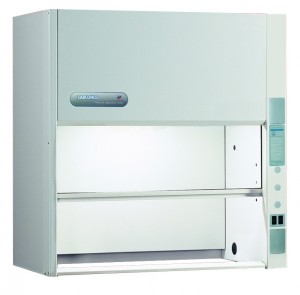Multiple organizations have adopted laboratory hood safety standards to determine the effectiveness of a hood in limiting occupational exposure. One such measure of determining the effectiveness of the hood is by measuring the speed of air entering the hood (i.e. the face velocity). While face velocity is not the only test method for determining if a hood has the ability to adequately contain the contaminants (see ANSI/ASHRAE 110-1995 Method of Testing Performance of Laboratory Fume Hoods), it is the only performance standard cited by the following organizations.
- OSHA – General air flow should not be turbulent and should be relatively uniform throughout the laboratory, with no high velocity or static areas (194, 195); airflow into and within the hood should not be excessively turbulent (200); hood face velocity should be adequate (typically 60-100 lfm)
- NIOSH – The current consensus of the literature is that the average face velocity for a laboratory chemical hood should be in the range of 80–120 ft/min
- Cal OSHA – The exhaust system shall provide an average face velocity of at least 100 feet per minute with a minimum of 70 fpm at any point, except where more stringent special requirements are prescribed
- ANSI/AIHA Z9.5-2003 – Design face velocities for laboratory chemical hoods in the range of 80-100 fpm (0.41-0.51m/s) will provide adequate face velocity for a majority of chemical hoods. Hoods with excellent containment characteristics may operate adequately below 80 fpm (0.41 m/s) while others may require higher face velocities. It is, therefore, inappropriate to prescribe a range of acceptable face velocities for all hoods. Room and operator dynamics have significant effects on hood performance at low face velocities. Therefore, it is important to understand the effects of dynamic challenges on hood performance so that standard operating procedures and user restrictions can be established. Operating a hood below 60 fpm (0.30 m/s) is not recommended since containment cannot be reliably quantified at low velocities and significant risk of exposure may be present
- ACGIH – Industrial Ventilation manual recommends 80-100 fpm depending on various conditions, including air distribution, proximity to foot traffic, etc.

